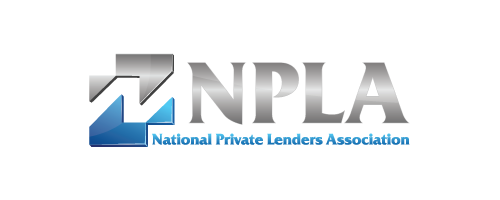NPLA Meeting Recap: Rates, Volume & Current Market Activity

Recap and Insights provided by Zach Wallin, Senior Director of Legal Operations at GoDocs
The most recent NPLA Meeting featured a member-led discussion moderated by Jon Hornik. Discussing rates, volume, and current market activity, the panel of NPLA lenders featured Ezra Dweck from IceCap Group, James Gaskin from Renovo Financial, Stephan Leccese from Lima One Capital, Jeff Fechter from HouseMax Funding, and Allen Shayanfekr from Sharestates. Each shared insights into how their respective organizations are addressing present-day challenges.
Become a member of the NPLA to join the next meeting!
Q&A
Are lenders choosing to stop lending in areas affected by ongoing natural disasters, such as Florida?
For IceCap Group, while they are not completely halting lending, they are reassessing multifamily loans due to fears over rising insurance costs in 2025. Although they are tapping the brakes on multifamily, they remain cautious but continue lending for 1-4 unit loans. Similarly, Renovo Financial is exercising caution but hasn’t put a blanket hold on lending. Renovo’s model involves close monitoring of assets and ensuring borrowers feel confident in their projects. Insurance is an issue for them, but they proactively have someone specifically keeping an eye on their insurance policies to predict how they might be affected in the future. Even with the risks involved, Renovo is not categorically stopping lending in any form.
Is insurance the biggest risk when lending in these disaster-prone areas, or are there other measures you’ve put in place to handle these challenges?
Lima One Capital is still accepting applications and lending but with stringent protocols, including property inspections and disaster reviews when there are FEMA declarations. They ensure discussions with developers happen early to confirm project viability, resource availability, and insurance status post-disaster. For HouseMax Funding, they focus on material costs, prioritizing conversations with borrowers about where they will source materials and how they plan to manage budget overruns. On the insurance side, HouseMax also requires borrowers to include hail and wind coverage in their insurance policies, which is expensive but crucial. As a lender selling into the secondary market, Sharestates is seeing a change in areas impacted by the hurricanes. Specifically, through connections with half a dozen DSCR buyers that they sell their paper to, at least four investors have put temporary pauses on any areas impacted by the hurricanes. Additionally, for new originations, they’ve had more trouble closing loans in markets like Florida, where they require hurricane, hail, and wind insurance coverage because they end up running into DSCR issues where the property just doesn’t cover the debt service to qualify for the proceeds to exit the loan.
How has the recent 50 basis point rate cut by the Fed impacted pricing?
Allen Shayanfekr explained that they have seen two types of borrowers emerge: those who were closing loans but decided to wait in hopes of better rates and those who acted quickly to close deals. IceCap saw a surge in cash-out refis and bridge loans when rates were falling, especially in August, but the multifamily sector has not experienced the same uptick. HouseMax’s portfolio has improved due to the rate reductions. However, they are being careful in passing on the rate advantage to borrowers in order to maintain better margins. For Lima One, they are seeing a dynamic shift in their pipeline, as they have been more proactive in price reductions for their long-term product which has shifted their mix and are seeing a volume increase in DSCR. They are also seeing much more demand in the marketplace, with buyers hunting for yield. Renovo is also seeing more demand for DSCR loans, with borrowers locking in rates, but they remain cautious and make decisions on a market-by-market basis.
Are defaults in your lending portfolios becoming more of a concern in this current rate environment?
Allen Shayanfekr shared that Sharestates has seen better default rates due to conservative underwriting, including reducing LTC ratios and raising credit score requirements. IceCap benefits from strong borrower relationships, allowing them to negotiate and resolve issues before they lead to defaults. He is optimistic about lending in 2025, believing that more liquidity will enter the space. Jeff Fechter reported that HouseMax has maintained low default rates for the last 12 months, around 1.5%, attributing this to thoughtful underwriting and the use of Plaid for borrower verification. For Renovo, their portfolio has performed steadily, with default rates in the 2-3% range. As a relationship lender, they focus on building strong connections with borrowers and servicing their loans directly to manage risks proactively.
In summary, the panel discussion provided valuable insights into how private lenders are navigating the current market challenges, from natural disaster risk and insurance concerns to the fluctuating interest rate environment and default management. Despite the challenges, there was a shared sense of optimism for the lending industry in 2025, with panelists confident in their strategies to mitigate risks and maintain steady growth.
Author Bio:
GoDocs is an innovative leader in automated loan document generation, transforming the commercial lending process. With a fully cloud-based platform, GoDocs provides a flexible digital solution that makes commercial loans more cost-effective to document and faster to close, all while maintaining compliance in all 50 states. GoDocs is a Corporate Member of the NPLA.
